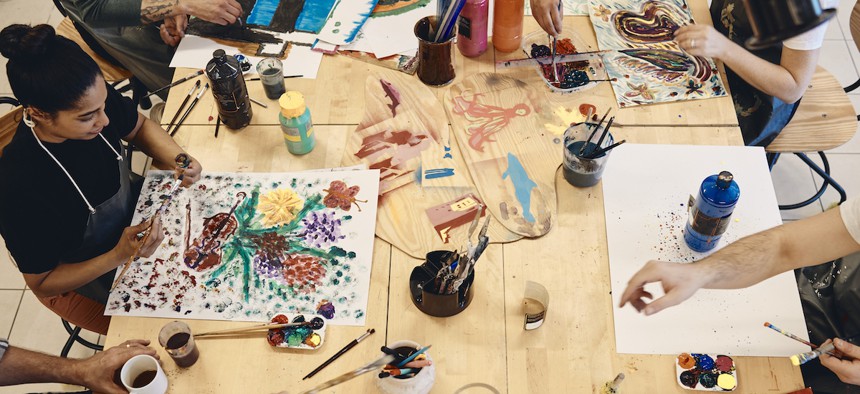Our Mayor Eric Adams recently announced that budget cuts are coming to New York City. “Fiscal discipline has been, and continues to be, a hallmark of my administration,” he recently declared. While we understand the argument for maintaining fiscal discipline in the current economic uncertainties of our city and country, necessities must always be fully funded. Arts in education is such a necessity. Overlooking this fact, education officials always seem to begin budget-cutting exercises by eliminating arts and music programming. That is a short-sighted decision. These programs should be included as a core component for all New York City students’ educational journeys. There is a different approach that could be used to both preserve music and arts programming, even in the face of declining budgets. To find it, look toward the west coast, where California’s advocates secured a successful ballot initiative that guarantees 1% of the state’s education budget to be devoted to arts and music programming.
Although it was not a major headline on the east coast after the recent November elections, the 1% policy has been discussed in education circles for decades, and California is the biggest state to pass the requirement.
The 1% policy requires districts to spend a minimum of 1% of their total education budget on arts and music programming in schools. It is important to note that the policy would not increase or decrease education funding - it would simply mandate districts to spend 1% of their funding on arts and music. The policy ensures that art and music programming has a guaranteed pot of funding, and all students receive this critical core subject area, even when education budgets are decreased. The ballot measure was supported by every major California media outlet, the music industry, and the California teachers’ union. It received no organized opposition, which is highly unusual in a state as large and diverse as California.
Art and music programming is regularly listed by children as their favorite subject, and critical research showing the importance of these core subject areas has expanded in recent years. Music programming improves students’ reading ability, arts education increases students’ attendance and both subjects improve students’ social and emotional learning. Sadly, in the early 2000s, many art and music classes were eliminated, largely due to the influence of the No Child Left Behind Act, which mandated schools to focus on reading and math at the expense of other programs. But the City’s annual Arts in Schools report has shown a slow, but steady increase in art and music programs for the decade leading up to the pandemic. And after several pandemic-influenced school years, arts and music education appears to be coming back, at least until we experience “fiscal discipline.”
Providing a guaranteed pot of funding for arts and music programming is also most important for students from underserved backgrounds. While all students benefit from arts and music classes, schools that serve low-income students are most likely to cut these programs when budgets are tight. Parent Teacher Associations in higher income schools are able to raise private funds to ensure that critical arts and music programming is not eliminated, even during times of budget tightening. But students who attend schools in lower income areas need to have the guaranteed fundings to prevent these critical programs from being cut.
As part of the City Council’s legislative agenda this spring, we are going to propose this 1% policy to do right by New York City’s public schools. Requiring our schools to spend a minimum of 1% of their budget on arts and music programming will benefit the students today and the whole of the city tomorrow. Future generations will thank us. Present ones will, too.
Rita Joseph is a New York City Council member and chair of the Committee on Education. Chi Ossé is a New York City Council member and chair of the Committee on Cultural Affairs, Libraries and International Intergroup Relations. Janice Weinman is CEO of Education Through Music.
NEXT STORY: Opinion: AAPI groups are in need of support to combat hate


